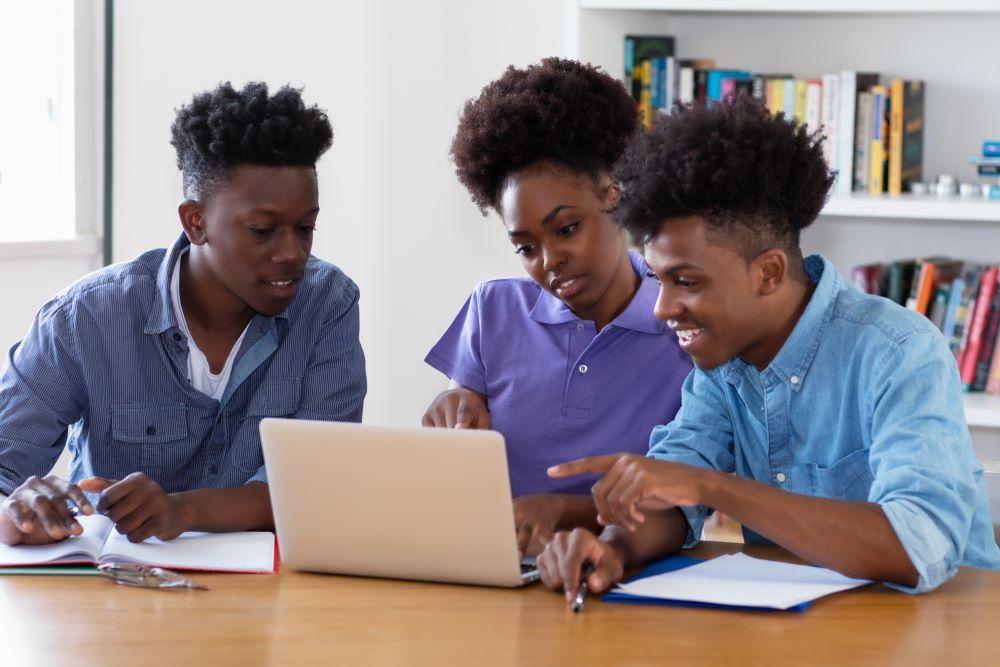In today’s world, classrooms are filled with students from all sorts of backgrounds. Each child brings their own culture, language, and experiences into the classroom. But how can schools make sure every student feels seen, valued, and supported? The answer lies in something called Culturally Responsive Education (CRE).
Culturally responsive education (CRE) is transforming the way students learn and grow in classrooms across the country. It’s more than just a teaching method—it’s a way to connect with students, celebrate their unique identities, and help them achieve their full potential. This approach is especially important in today’s diverse classrooms, where students come from many different cultural backgrounds. But how does culturally responsive education impact student achievement and engagement? And how are organizations like More Than Just A School leading the way? In this article, we’ll explore all of these questions and most importantly show you how you can play a part in advancing our educational system through the concept of culturally responsive education.
What is Culturally Responsive Education?

Culturally responsive education is a teaching approach that recognizes and respects the cultural backgrounds of all students. It’s about making sure that every student feels valued and understood in the classroom. This means teachers use students’ own cultural experiences as a foundation for learning, making lessons more relevant and engaging for everyone.
Sadly, for many kids this is not the case, school isn’t always a welcoming place. Sometimes, the way things are taught can make students feel like they don’t belong or that their culture isn’t important. This can lead to kids feeling left out, unmotivated, and even struggling in their classes. It’s like trying to fit a square peg into a round hole – it just doesn’t work!
Culturally Responsive Education is the magic key that unlocks every child’s potential. Imagine a classroom where the lessons reflect the students’ lives—where students can see themselves in the stories they read, the problems they solve, and the history they learn. That’s what culturally responsive education aims to do. It’s not just about teaching students; it’s about reaching them in a way that makes learning meaningful and exciting.
The Importance of Culturally Responsive Education in Today’s Classrooms

Today’s classrooms are more diverse than ever before. This means that teachers can no longer rely on a one-size-fits-all approach. Culturally responsive education has become more crucial than ever because it helps address the unique needs of each student.
It is not just a good idea; it works! Research shows that culturally responsive education can boost:
- Grades and test scores: Students do better when they see themselves reflected in their lessons.
- Increases Engagement: Students are more likely to show up and participate when they feel valued.
- Boost confidence: Feeling like you belong can make a big difference in how you feel about yourself.
When students see their cultures and experiences reflected in what they are learning, they feel valued and understood. This not only makes them more interested in school, but it also helps them do better academically. Without culturally responsive teaching, many students may feel left out or disconnected, which can lead to lower engagement and achievement.
The Impact of Culturally Responsive Education on Student Achievement

Research shows that culturally responsive education has a powerful impact on student achievement. When students feel understood and valued, they are more motivated to learn. They become more confident, more willing to take on challenges, and more likely to succeed.
For example, schools that have implemented culturally responsive teaching strategies have seen significant improvements in test scores and graduation rates. Students are not only learning more, but they are also developing critical thinking skills, problem-solving abilities, and a love for learning. By connecting lessons to students’ own experiences, culturally responsive education makes learning more meaningful and effective.
The Impact of Culturally Responsive Education on Student Engagement
Student engagement is key to successful learning. When students are engaged, they are more likely to pay attention, participate in class, and retain what they’ve learned. Culturally responsive education boosts engagement by making learning more relevant to students’ lives.
In culturally responsive classrooms, students are encouraged to share their own stories and experiences. This creates a more interactive and inclusive environment where every student’s voice is heard. Teachers use culturally relevant examples and materials that reflect the students’ backgrounds, making lessons more relatable and interesting.
This approach not only keeps students engaged but also helps build strong relationships between teachers and students. When students feel that their teachers truly understand and respect them, they are more likely to be motivated and involved in their learning.

More Than Just a School: Leading the Way in Promoting Culturally Responsive Education
More Than Just A School, the non-profit arm of Roots To Routes Academy, is a shining example of how culturally responsive education can make a difference. Our work with Roots To Routes Academy is built primarily on promoting the concept of culturally responsive education.
Routes To Routes Academy is an academic program with a curriculum created by Black educators for Black students. It provides a safe space where students can celebrate their identities, grow educationally, and achieve success without conforming to traditional expectations.
The goal of More Than Just A School is to support Roots To Routes Academy’s mission by securing funding, fostering partnerships, and enhancing community support. Through our work, we are driving the initiative for culturally responsive education, ensuring that students have the resources and support they need to succeed.
At Roots To Routes Academy, culturally responsive education is at the heart of everything they do. The curriculum is designed to reflect the students’ cultural backgrounds, making learning more relevant and engaging. Teachers at the academy use personalized teaching styles that recognize and celebrate each student’s unique identity, helping them to thrive academically and personally.
However, the impact of culturally responsive education goes beyond the classroom. With support from More Than Just A School, Roots To Routes Academy is creating a community where students feel supported and empowered. By fostering partnerships with local organizations, securing funding for educational programs, and engaging parents and volunteers, More Than Just A School is making a lasting difference in the lives of students.
Best Practices for Implementing Culturally Responsive Education
Implementing culturally responsive education doesn’t have to be difficult. Here are some best practices that educators can use to create a more inclusive and engaging classroom:
- Create a Culturally Relevant Curriculum: Incorporate materials that reflect the diverse backgrounds of your students. This could include literature, history lessons, and examples from different cultures.
- Engage with Students’ Cultural Backgrounds: Encourage students to share their own experiences and stories. Use these as a basis for class discussions and projects.
- Provide Ongoing Professional Development: Educators should receive training in culturally responsive teaching methods. This will help them better understand and connect with their students.
- Build Strong Relationships: Take the time to get to know your students and their families. Strong relationships create a supportive learning environment where students feel valued.

Challenges and Considerations in Culturally Responsive Education
While culturally responsive education has many benefits, it also comes with challenges. Some educators may feel unprepared to implement these practices, or they may face resistance from others. Lack of resources and support can also be a barrier.
However, these challenges can be overcome with the right strategies. Professional development and training are essential for helping educators feel confident in their ability to teach in a culturally responsive way. Schools and districts can also provide support by investing in resources and creating a culture that values diversity and inclusion.
How You Can Promote Cultural Responsive Education
Now, just imagine a world where every child, regardless of their background, has the chance to reach their full potential. That is the world More Than Just a School is working towards.
Whether you’re a donor, an educator, a volunteer, or a parent, you can be part of this exciting movement. By supporting More Than Just a School, you’re investing in the future of Black students and helping to create a more just and equitable education system for all.
Don’t miss out on this opportunity to make a real difference. Get involved, contact More Than Just a School today, and see how you can help unlock the potential of every child.
Conclusion
Culturally responsive education is not just a trend—it’s the future of teaching. By making education more inclusive and relevant, we can help all students achieve their full potential. More Than Just A School and Roots To Routes Academy are leading the way, showing how culturally responsive education can make a real difference in students’ lives.
If you’re a donor, educational institution, volunteer, or parent, now is the time to get involved. By supporting culturally responsive education, you can help create a brighter future for all students. Don’t miss out on the opportunity to be a part of this important movement—join us in making a difference today!


